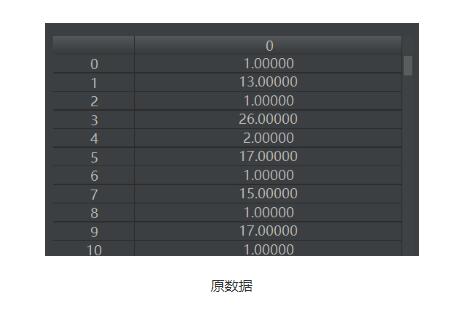Python調(diào)用C/C++的方法解析
Python是解釋性語言, 底層就是用c實現(xiàn)的, 所以用python調(diào)用C是很容易的, 下面就總結(jié)一下各種調(diào)用的方法, 給出例子, 所有例子都在ubuntu9.10, python2.6下試過.
1. Python 調(diào)用 C (base)
想在python中調(diào)用c函數(shù), 如這兒的fact
#include <Python.h>int fact(int n){ if (n <= 1) return 1; else return n * fact(n - 1);}PyObject* wrap_fact(PyObject* self, PyObject* args){ int n, result; if (! PyArg_ParseTuple(args, 'i:fact', &n)) return NULL; result = fact(n); return Py_BuildValue('i', result);}static PyMethodDef exampleMethods[] ={ {'fact', wrap_fact, METH_VARARGS, 'Caculate N!'}, {NULL, NULL}};void initexample(){ PyObject* m; m = Py_InitModule('example', exampleMethods);}
把這段代碼存為wrapper.c, 編成so庫,
gcc -fPIC wrapper.c -o example.so -shared -I/usr/include/python2.6 -I/usr/lib/python2.6/config
然后在有此so庫的目錄, 進入python, 可以如下使用
import example
example.fact(4)
2. Python 調(diào)用 C++ (base)
在python中調(diào)用C++類成員函數(shù), 如下調(diào)用TestFact類中的fact函數(shù),
#include <Python.h>class TestFact{ public: TestFact(){}; ~TestFact(){}; int fact(int n);};int TestFact::fact(int n){ if (n <= 1) return 1; else return n * (n - 1);}int fact(int n){ TestFact t; return t.fact(n);}PyObject* wrap_fact(PyObject* self, PyObject* args){ int n, result; if (! PyArg_ParseTuple(args, 'i:fact', &n)) return NULL; result = fact(n); return Py_BuildValue('i', result);}static PyMethodDef exampleMethods[] ={ {'fact', wrap_fact, METH_VARARGS, 'Caculate N!'}, {NULL, NULL}};extern 'C' //不加會導致找不到initexamplevoid initexample(){ PyObject* m; m = Py_InitModule('example', exampleMethods);}
把這段代碼存為wrapper.cpp, 編成so庫,
g++ -fPIC wrapper.cpp -o example.so -shared -I/usr/include/python2.6 -I/usr/lib/python2.6/config
然后在有此so庫的目錄, 進入python, 可以如下使用
import example
example.fact(4)
3. Python 調(diào)用 C++ (Boost.Python)
Boost庫是非常強大的庫, 其中的python庫可以用來封裝c++被python調(diào)用, 功能比較強大, 不但可以封裝函數(shù)還能封裝類, 類成員.
http://dev.gameres.com/Program/Abstract/Building%20Hybrid%20Systems%20with%20Boost_Python.CHN.by.JERRY.htm
首先在ubuntu下安裝boost.python, apt-get install libboost-python-dev
#include <boost/python.hpp>char const* greet(){ return 'hello, world';}BOOST_PYTHON_MODULE(hello){ using namespace boost::python; def('greet', greet);}
把代碼存為hello.cpp, 編譯成so庫
g++ hello.cpp -o hello.so -shared -I/usr/include/python2.5 -I/usr/lib/python2.5/config -lboost_python-gcc42-mt-1_34_1
此處python路徑設(shè)為你的python路徑, 并且必須加-lboost_python-gcc42-mt-1_34_1, 這個庫名不一定是這個, 去/user/lib查
然后在有此so庫的目錄, 進入python, 可以如下使用
>>> import hello>>> hello.greet()’hello, world’
4. python 調(diào)用 c++ (ctypes)
ctypes is an advanced ffi (Foreign Function Interface) packagefor Python 2.3 and higher. In Python 2.5 it is alreadyincluded.
ctypes allows to call functions in dlls/shared libraries and hasextensive facilities to create, access and manipulate simple andcomplicated C data types in Python - in other words: wraplibraries in pure Python. It is even possible to implement Ccallback functions in pure Python.
http://python.net/crew/theller/ctypes/
#include <Python.h>class TestFact{ public: TestFact(){}; ~TestFact(){}; int fact(int n);};int TestFact::fact(int n){ if (n <= 1) return 1; else return n * (n - 1);}extern 'C'int fact(int n){ TestFact t; return t.fact(n);}
將代碼存為wrapper.cpp不用寫python接口封裝, 直接編譯成so庫,
g++ -fPIC wrapper.cpp -o example.so -shared -I/usr/include/python2.6 -I/usr/lib/python2.6/config
進入python, 可以如下使用
>>> import ctypes>>> pdll = ctypes.CDLL(’/home/ubuntu/tmp/example.so’)>>> pdll.fact(4)12
到此這篇關(guān)于Python調(diào)用C/C++的方法解析的文章就介紹到這了,更多相關(guān)Python調(diào)用C/C++的方法內(nèi)容請搜索好吧啦網(wǎng)以前的文章或繼續(xù)瀏覽下面的相關(guān)文章希望大家以后多多支持好吧啦網(wǎng)!
相關(guān)文章:
1. python實現(xiàn)讀取類別頻數(shù)數(shù)據(jù)畫水平條形圖案例2. python中PyQuery庫用法分享3. python操作數(shù)據(jù)庫獲取結(jié)果之fetchone和fetchall的區(qū)別說明4. PHP獲取時間戳等相關(guān)函數(shù)匯總5. JSP+Servlet實現(xiàn)文件上傳到服務器功能6. Ajax實現(xiàn)頁面無刷新留言效果7. php5.6不能擴展redis.so的解決方法8. python 爬取嗶哩嗶哩up主信息和投稿視頻9. CSS3實現(xiàn)動態(tài)翻牌效果 仿百度貼吧3D翻牌一次動畫特效10. AJAX實現(xiàn)數(shù)據(jù)的增刪改查操作詳解【java后臺】

 網(wǎng)公網(wǎng)安備
網(wǎng)公網(wǎng)安備